How MediaTek is Driving AI Innovation at the Edge - Six Five Media
PD Rajput, Associate Vice President at MediaTek, joins hosts to share insights on how edge AI, custom silicon, and advanced device capabilities are transforming client computing across Chromebooks and personal AI supercomputers.
Will AI at the edge transform the future of client computing, from personal supercomputers to everyday Chromebooks?
Hosts Patrick Moorhead and Daniel Newman are joined by MediaTek's PD Rajput, Associate Vice President, Client Computing and Display Business Unit, for a conversation on how MediaTek is driving AI innovation at the edge. The discussion centers on the rising importance of AI at the edge and the role that custom silicon plays in enabling on-device intelligence across diverse platforms.
Key Takeaways Include:
🔹Edge AI adoption: Real-world use cases of Small Language Models (SLMs) and on-premise Private AI are fueling the drive for more powerful edge solutions.
🔹MediaTek’s approach: Advances in MediaTek's NPUs, picture engines, and GPUs, supported by robust SDKs and partnerships, are enabling on-device AI across categories.
🔹AI on Chromebooks: MediaTek’s integration of advanced AI features is making Chromebooks smarter and more capable for end users.
🔹AI personal supercomputers: Projects like NVIDIA DGX Spark, powered by the GB10 which MediaTek and NVDIA collaborated to design, spotlight the trend toward high-performance, on-device AI compute.
🔹Custom silicon demand: A market shift is creating opportunities for custom silicon; MediaTek targets sectors from consumer to datacenter with tailored chips.
Learn more at MediaTek
Watch the full video at sixfivemedia.com, and be sure to subscribe to our YouTube channel so you never miss an episode.
Or listen to the audio here:
Disclaimer: Webcast is for information and entertainment purposes only. Over the course of this webcast, we may talk about companies that are publicly traded, and we may even reference that fact and their equity share price, but please do not take anything that we say as a recommendation about what you should do with your investment dollars. We are not investment advisors, and we ask that you do not treat us as such.
Patrick Moorhead: Welcome back to the six five podcast. We are talking about our favorite subject that we have been really pretty much.
Daniel Newman: Talking about the whole time.
Patrick Moorhead: The last, I don't know what Daniel; two and a half years and that is AI.
Daniel Newman: Yeah, it's been quite a few years, Pat. It's sometime in November in 2022, I think all of us started to quickly realize that we may never talk about anything else again. Even if we love talking cloud, it's going to be Cloud and AI. We like talking about PCs, it's AI PCs. We like talking handsets, it's AI smartphones. Want to talk about networking? It's not just networking, Pat, it's networking for AI. But let's be candid. In a business like ours, it sure is nice to have a news cycle moving this fast with this many companies doing this many things.
Patrick Moorhead: It really is chaos. Love analysts and analysts love chaos. So let's dive in. Most of the conversation about AI has been about the data center. But as we know it, I mean, historically it's been the case that given enough time and enough tech, compute ultimately move the edge. And the edge of the AI is not new, folks. Okay? Everything you're doing on your smartphone, so many things that you do on your PC have to do with AI. But the entire industry is stepping up its game with Edge AI. And one of those players is MediaTek. And we have PD here for the first time. Welcome to the Six Five Pod PD to talk about AI on the Edge.
PD Rajput: Thank you for having me here, Pat. Nice to have you as well with the MediaTek team here.
Daniel Newman: Yeah, so let's start right there. I mean, Pat, set this up real nicely. PD AI has been quite a topic, but data centers seem to be in focus. But there are a number of companies, media tech included, that really believe that AI at the edge has a big play. Why are you so bullish on that?
PD Rajput: Yeah, Daniel, See obviously there's a lot of talk and investment around AI, AI and the gigawatt class data centers and all of that. And that's all good. That's kind of a pursuit towards some sort of artificial general intelligence or super intelligence. But imagine for an enterprise, do you really care about your HR chatbot having a master in advanced physics? Probably not. Right. So there's like SLMs that we are seeing now which are more fine tuned and tailored and which can do the job pretty well, which are more helpful for the specific task. Now with the types of capabilities like MediaTek and our competitors, some of them have also been brought into the edge have enabled small language models to be on the edge. If these SLMs can be on the edge and be more helpful, there is not just a benefit that a lot of people talk about in terms of latency or privacy or security and offline mode, but there's like economic incentives too. Imagine for a service provider who doesn't have to manage the capex of or doesn't have to manage the infrastructure in the cloud to deliver their service. When the user has the device ready, it can just use their service as you go. So the economics of doing AI on the edge actually make a lot of sense and, and with SLMs which are being more helpful now, very tailored, it makes a lot of more sense for AI to be on the edge. There's a lot more to talk about here, both in terms of training and inference. But that kind of is the high level why MediaTek believes the future is going to be with Edge for AI as well, along with obviously in the cloud.
Patrick Moorhead: Yeah, a lot of discussion about this and one of the things that really intrigues me is, I mean first of all, billion parameter models being done on clients, quantization of models, I mean reasoning, full reasoning models on clients. It truly is incredible. So what is MediaTek doing? How are you guys innovating to really capture this? I'll call it a new wave of on-device AI. And I always have to, you know, we are in the second big wave. I mean you're doing this on cameras already, you're doing this in many areas for machine learning already.
PD Rajput: That's right, yeah. Pat, like MediaTek, is Silicon first company. We don't pretend to be anything else. We aim to be the best silicon provider on the planet. So some of the things we are focused on is obviously building the best heterogeneous systems for these new class workloads. We have the industry leading NPUs in our devices which go from Chromebooks to phones to many other locations, focusing on good GPUs. Our arm architecture is also always on the leading edge. We have a parallel instruction set as part of the ARM instruction sets that we are deploying in our systems. Other than these compute engines. We are also very conscious of the evolving workloads. The reasoning models or the reasoning at the edge is very memory bandwidth intensive. So the balance of memory bandwidth, memory capacity and the compute, we are very conscious of that in making those choices when we make a silicon for a certain device. So those are our investments across the silicon space. The second piece is software and ecosystem. We have a lot of huge investments particularly in the tool stack. Working with our ecosystem partners to optimize their stack on our silicon and an ecosystem is generally a very broad category. Our initial focus is very much on those leading software partners that we have. We have very tight partnerships with Nvidia, with Google and with many others who are leaders in this space and optimizing their stack and system software on our platforms. So software and ecosystem is the second one and third one is Pat. I think it's a little underappreciated generally. I don't know if enough people talk about it, but we actually drive very predictable roadmaps for our customers and our partners. We spend a lot of time with our customers and partners talking about what they can expect next year, two years from now, three years from now, and four years from now. And it's not just about capabilities, it's about the cost that they can expect. They can plan their whole business around our roadmaps. So in terms of having that conversation with our customers on how they can drive their AI journey with MediaTek, we spend a lot of time on silicon software and ecosystem and the predictability and roadmap is what we drive. I will say one other thing generally Pat, as you know and Daniel, as you know better than most that silicon cycles are very long. It takes two, three, three years to develop. Three years ago, almost less than three years ago, December 2022 was when Chat GPT came out. If somebody was building silicon back then, they're probably still building it now. But so much has changed in the three years. Those choices that they probably made on December 22 are not good, not relevant anymore. It's probably very different. What we have done in our execution methodologies and our mindset is we are very agile. We listen to the signals, we listen to our partners, we work with the industry and we have put together a very hardware software co design methodology in our development cycle which allows us to be agile and respond to market trends. So we have launched some very flagship products which I'll talk about as well, which just three years ago we were not thinking about but we were able to launch because of the way we have enabled our engineering organizations to respond. So across multiple vectors MediaTek is kind of leading in many areas to lead in this space of AGI.
Daniel Newman: So you mentioned partners and one of the names you mentioned was Nvidia, which maybe we can talk about later. The other name that you mentioned was Google. I think when we were getting ready for this video we were on and we were having a little bit of hiccups with some of the processing of your audio when it wasn't working and you're like, hey, quick, let me come back. And then you came back on a different machine, which was a Chromebook, right, if I'm not mistaken. And it was like bam. Everything worked great. Now I'm not saying bad machine, good machine, I'm saying maybe pd you were setting us up for this. I don't know, sometimes people do that. But in all serious talk a little bit about, you know, how these innovations are, you know, some of this edge AI and MediaTek are working to bring these innovations to Chromebook.
PD Rajput: Yeah, Daniel, Specifically the Chromebook I'm using right now is Lenovo Chromebook Plus 14. It has a MediaTek Companion Ultra 910 processor. When it launched it was. It has a 50 top NPU. This machine has 16GB RAM and today it's retailing at Best Buy for less than around $700 or something in that category. It is a leading machine just purely on the specs and capabilities it has. Even compared to any other OSes, it's a delightful device. It has a great Dolby sound, it has an amazing camera, it's OLED screen and it's so snappy. The moment I actually got this machine it was up and running in less than two minutes. Just press the button up, connect to my phone, everything down right there. But that's just the device in terms of AI. We have partnered with Google to bring these flagship Chromebook plus devices to market. There's this Lenovo device that I'm on right now, but we also just launched with Acer Acer Spin 514 which is another Chromebook plus, another leading device in this category. These are flagship devices for Chromebook which Mediatek is the front runner in bringing to market. That is because Google believes in our not just silicon capabilities but in our ability to execute with them and bring these great devices to market with quality and on time. We actually have lots of on device AI capabilities on this. I mean publicly the ones we have talked about is image generation and actually NotebookLM is on it too. But it's mostly on the cloud right now. But it comes on a device. We also have smart grouping smart tabs as well. Help me read, help me write. There are a few other features as well which go to the cloud for authentication but then run on device. This is setting us up for something that I think Google talked about last week as well. Is it the desktop Android or the Android coming to the PC? We are very tight partners with Google, we have a very fast growing share in Chromebooks. We are the number one ARM based Silicon provider for Chromebooks. So our partnership with Google is set up when Mediatek will be leading in the Android based PC space when Google comes out next year. And what that does is you have all this goodness with Google on Gemini and all of that comes right when it's invented to the machine with Android PC and it runs on the MediaTek processor at the launch. So no lag between phone or PC and it's all seamless on a MediaTek processor that we are building. So our platform and Silicon innovations will be kind of bringing the whole Android AI experience to market as well. So you'll see a lot of new and innovative devices coming out between us and Google and our OEM partners next year as well.
Patrick Moorhead: Yeah. So gosh, on, on the device spectrum, I mean you have kind of the, the IoT devices, you, you move into smartphones, tablets, Chromebooks, PC and then you have this thing that, you know, Nvidia calls an AI supercomputer for your desktop. Right. Which you know, we were talking about alliances here that, that you're actually working with, with, with Nvidia to, to do that. I mean, it really, really got a lot of questions and a lot of interest and you know, I remember the first time seeing that. I couldn't believe how small it was. I really couldn't. Hey, can you talk a little bit about what you're doing in this space?
PD Rajput: Yeah, no, this is a very exciting category and we are proud to be working with Nvidia very closely and that the belief here is pat that to my previous point, going to the cloud and doing all your model development and training is good, but at some point when you start comparing the opex you have to spend in setting up the cloud VMs, the provisioning before the real work is done, there's a lot of overhead in going to the cloud. If 70% of the work can be done locally on a machine that you own, you don't have to go to the cloud all the time. One would rather just do that and then go to the cloud for the rest of the production run of the training cycle. If you look at that scenario, and if it supports the same consistent software stack, which is the incumbent, which is the dominant stack in the cloud, which is the Nvidia based AI software stack which is supported on Grace Blackwell today, if the same software stack runs on your desktop, on this GB10 superchip that we have, well, this is a dream come true for a developer who is working on LLMs. This is actually even better. If you're working on SLMs and you don't even need to go to the cloud. Almost all of the work can be done locally here actually. Pat, I know you have talked about modern on prem private AI as a huge opportunity. I know you've talked about it. And imagine when rather an enterprise which really doesn't care about a godlike LLM, they care about very fine tuned specific models for their own purpose built use cases. These machines for an enterprise or their developers are like the best thing that they can get. They don't need to go to a cloud to run a big, small training run or small fine tuning run on a big LLM in the cloud. So. So the use case is that the TCO that we believe the developers will see by using something like this DGX Spark device with our GB10 chip that we have built together with Nvidia will be a game changer. So this is the training part of the story, fine tuning, prototyping, the training part of the story and amazing TCO and we believe it is a category creator but huge growth we believe will be coming from this. In fact we see the market adopting it and we see some other versions of this device coming out too from some other players, which is generally heartening to see because that validates the use case here. Actually OpenAI launched a couple of SLMs. The 20B model which can run on a laptop and 120B open source model which can run on an AI workstation. Yeah, that can run on the Spark. Actually it's been optimized on an RTX GPU already. So we work very closely with Nvidia for that. So that's the training piece. There is an inference angle as well to that, but we are positioning or Nvidia is positioning this device mostly for training at this time. So that's kind of where we are. And I think it's very heartening to see how many OEM partners have come along to build their versions of this platform. I'll add one more thing. In the Hot Chips conference, our very good friends from Nvidia talked about our partnership and how we built this chip together. And you'll see how tightly integrated two companies work together in bringing this chip together. Nvidia with their amazing capabilities on the graphics and AI side and MediaTek with its great capabilities on building high performance but power efficient CPUs using these two capabilities together, it's a game changer and we are very excited about it.
Daniel Newman: So let's bring this all together. A lot of great partnerships clearly and a lot of opportunities for what the edge can offer. And I think that certainly MediaTek is showing that it has a big commitment to seeing this play out and the growth opportunities that come with it. Another thing that MediaTek's been involved in, both in data center and for smartphones and PCs, has been going custom and we know there's a lot of kind of, there's a lot of debate: does custom needed how much custom is needed? And this debate goes all the way from merchant for the data center to how much do we need to customize. A phone's a phone's a phone. But we all know that delivering custom is how these different OEMs are able to differentiate. So it's been a big part of your business. Talk a little bit about how you're thinking about custom silicon across the MediaTek business.
PD Rajput: Thanks for asking that, Daniel. I want to say that Mediatek is in a very unique place where we have significant presence at each of these compute locations, starting from a very small edge device like a variable to a phone to a PC, from an auto to a data center. And we don't have small little engagements. We have major engagements across all of these. So we see the entire spectrum and we have very, very deep engagements across the board with it. Custom silicon and ASIC is in our DNA. MediaTek prides itself in our IP portfolio, in our foundry and supply chain partnerships, in our ability to change our offerings to a customer's need and our flexible business model in which we serve our customers in the ASIC that's in our DNA. And we have been using that DNA very, very successfully in the data center space. Now that DNA comes over to the edge side in this and you see that in our engagement with Nvidia with GB10 on how this customer kind of engagement was done, where generally it's very hard to think of two silicon companies partnering together and getting a chip out. And Jensen talked about it. We got this chip out in the first step and it's in production, so that's there. Now the second piece I talked about custom silicon is we talked a lot about SLMs and LLMs and there's a unique opportunity for OEMs to differentiate. Now in this era of AI, it's been differentiated generally based on the battery size or panel and others, but the processor and the OS is usually the same for most OEMs. Well now with SLMs being able to be fine tuned and new types of base coming in to deploy These models On the device OEMs have an option to customize their machine, their offering down to the silicon level and that will drive better business model and monetary advantages for our customers. And we believe that's what the future is and that's what we're going to see more and more of to bring differentiation into this market. Actually, one of the things that we saw two weeks ago is Inference is getting disaggregated in the cloud. The pre-fill phase has its own accelerator or other Nvidia Rubin CPX, which is an amazing innovation with the video transcode as well in it. Well, you could imagine the world where if Inference is running on an edge device, would you want to tailor it to a certain part of the inference versus the other? Do you want to dial up the video encode versus the memory bandwidth versus the compute based upon the use cases? You can have different choices of silicon for your edge device, including a PC. So I do definitely believe one size fit all world is going to shrink a little bit if the OEM has to differentiate. And that DNA of building custom silicon that MediaTek brings is going to be very important in helping an OEM to get to market.
Daniel Newman: Well pd, this was a great conversation. We appreciate you tearing through the Edge AI application, walking us through all the partnerships that you have and of course talking about the custom silicon business which goes well beyond the edge and you're doing many things and we know you've got some great parts in the data center as well. So the story's continuing to get stronger for MediaTek. Both Patrick and I will continue to watch very closely all the things you are doing and we hope to get you back on. We'll talk more here on the Six Five with you as these innovations and these updates keep coming out.
PD Rajput: For sure. Daniel, thank you so much for the time and thank you Pat.
Patrick Moorhead: Thank you.
Daniel Newman: Thank you everybody for being part of this Six Five Webcast virtual here. We had media tech on the show. We were talking edge AI, we were talking PCs, we talked a little data center and so much more. Hit subscribe. Join us for all of our other great content here on the Six Five for this episode. We got to say goodbye. See you all later.
MORE VIDEOS
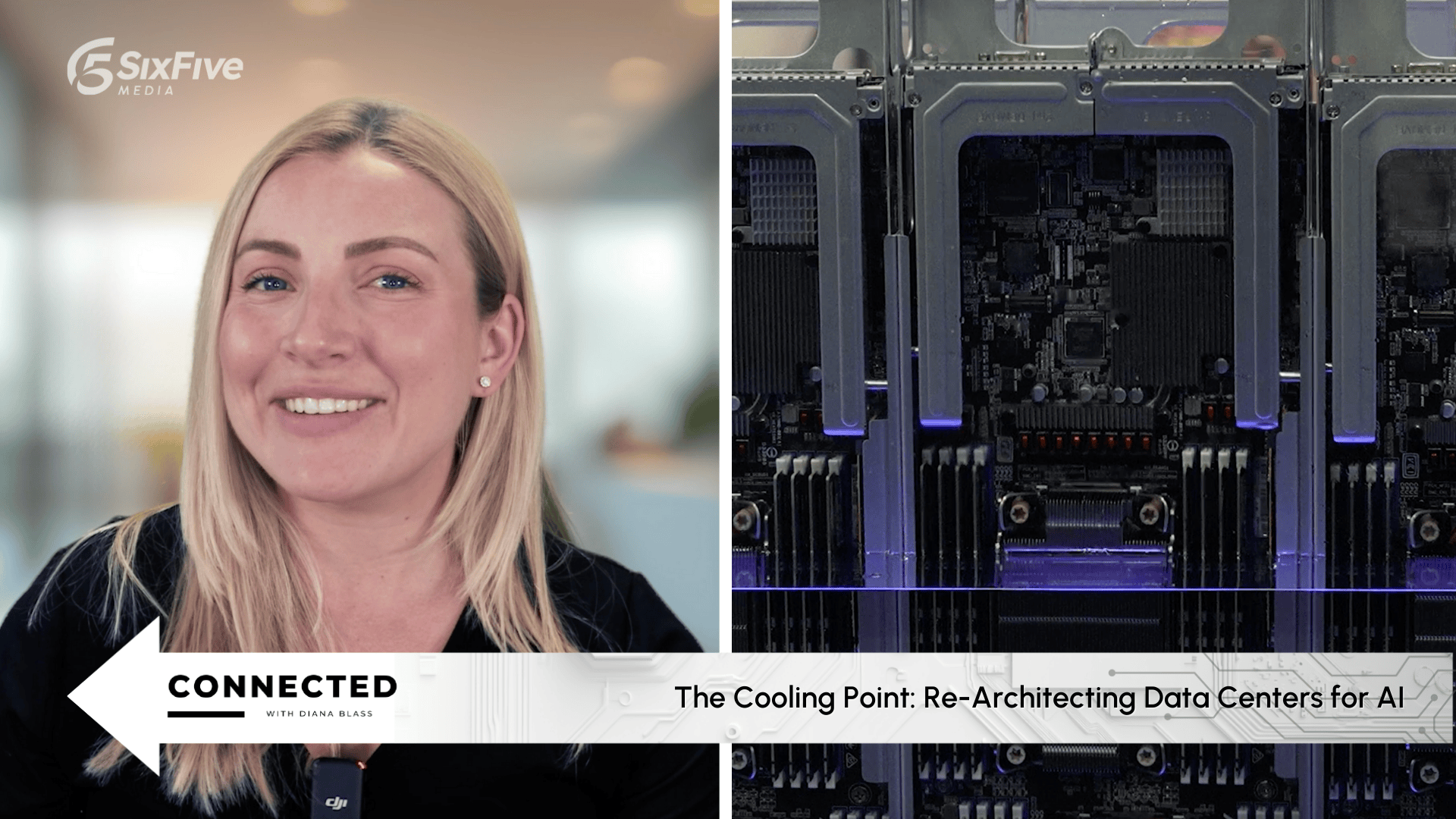
The Cooling Point: Re-Architecting Data Centers for AI - Six Five Connected with Diana Blass
Avi Shetty, Hecheng Han, Dr. George Zhang, Neil Edmunds, John Griffith, Josh Grossman, and Francesca Cain-Watson join Diana Blass to discuss the evolution of liquid cooling in AI systems, exploring design tradeoffs, architectures, and deployment strategies.

The Six Five Pod | Ep. 288: OpenAI’s Valuation Debate, Marvell’s Network Bets, and the Next Bottlenecks for AI Growth
This week, Patrick Moorhead and Daniel Newman unpack why today’s AI moment feels less like the endgame and more like Netflix’s DVD-by-mail phase—the very beginning of a transformation that will redefine the tech industry. They dig into soaring AI valuations and the growing debate over whether today’s leaders signal durable platforms or bubble dynamics, then shift to what really matters under the hood—AI infrastructure, with a sharp focus on networking and memory, informed by insights from Marvell’s Industry Analyst Day. This episode also breaks down recent market moves across major tech players, before closing with a forward-looking take on where AI is headed and what it will take to stay competitive as the pace of change continues to accelerate.
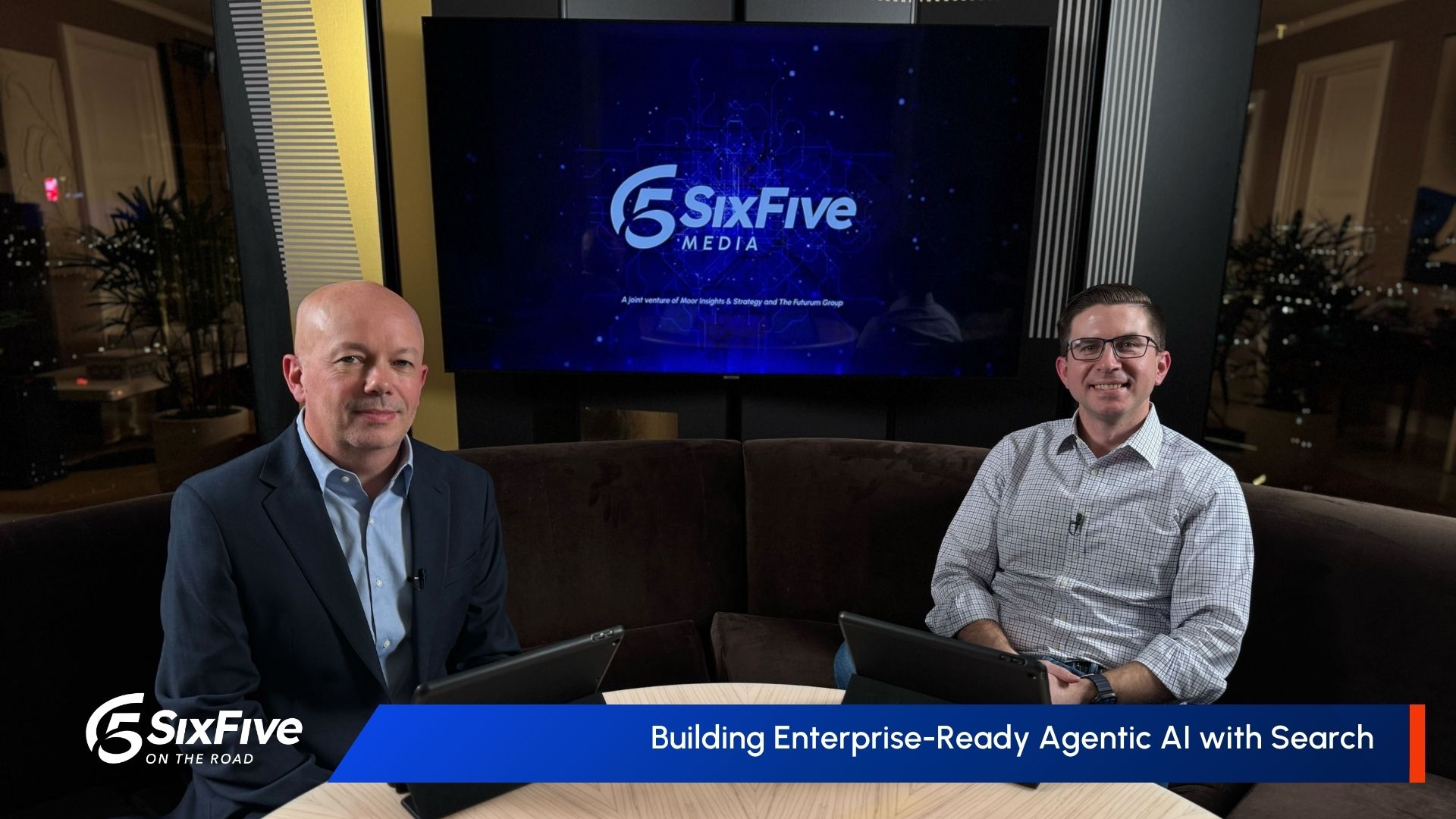
Building Enterprise-Ready Agentic AI with Search - Six Five On The Road
Steve Kearns, GM of Search Solutions at Elastic, joins Nick Patience to share how Elastic is enabling enterprises to move from RAG to agentic AI, solving operational challenges, and powering the next generation of autonomous workflows.
Other Categories
CYBERSECURITY
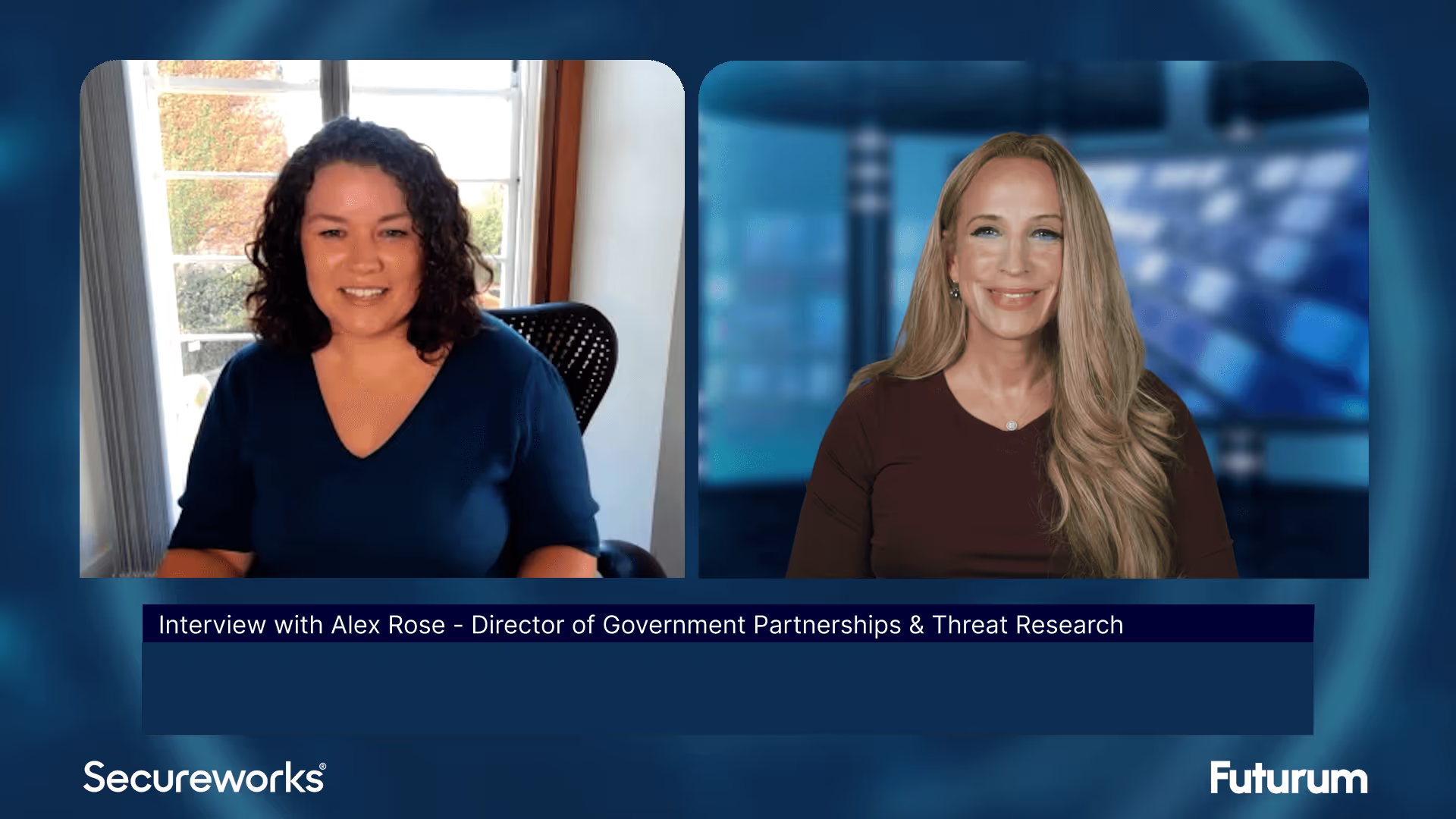
Threat Intelligence: Insights on Cybersecurity from Secureworks
Alex Rose from Secureworks joins Shira Rubinoff on the Cybersphere to share his insights on the critical role of threat intelligence in modern cybersecurity efforts, underscoring the importance of proactive, intelligence-driven defense mechanisms.
QUANTUM
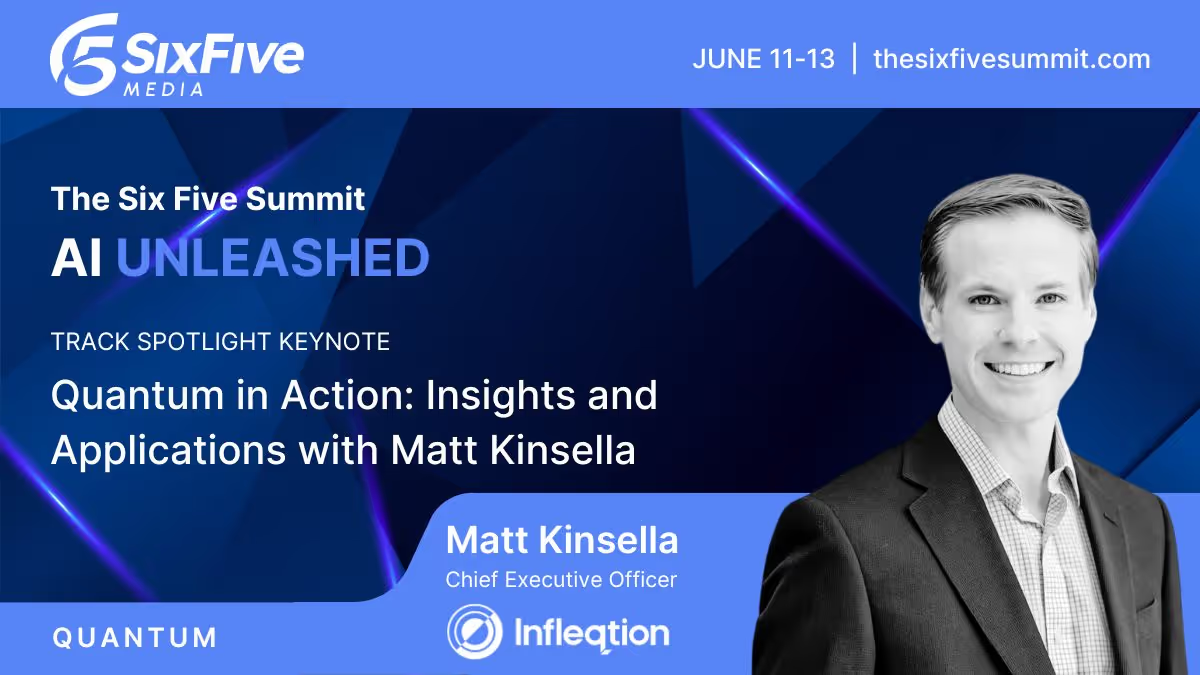
Quantum in Action: Insights and Applications with Matt Kinsella
Quantum is no longer a technology of the future; the quantum opportunity is here now. During this keynote conversation, Infleqtion CEO, Matt Kinsella will explore the latest quantum developments and how organizations can best leverage quantum to their advantage.
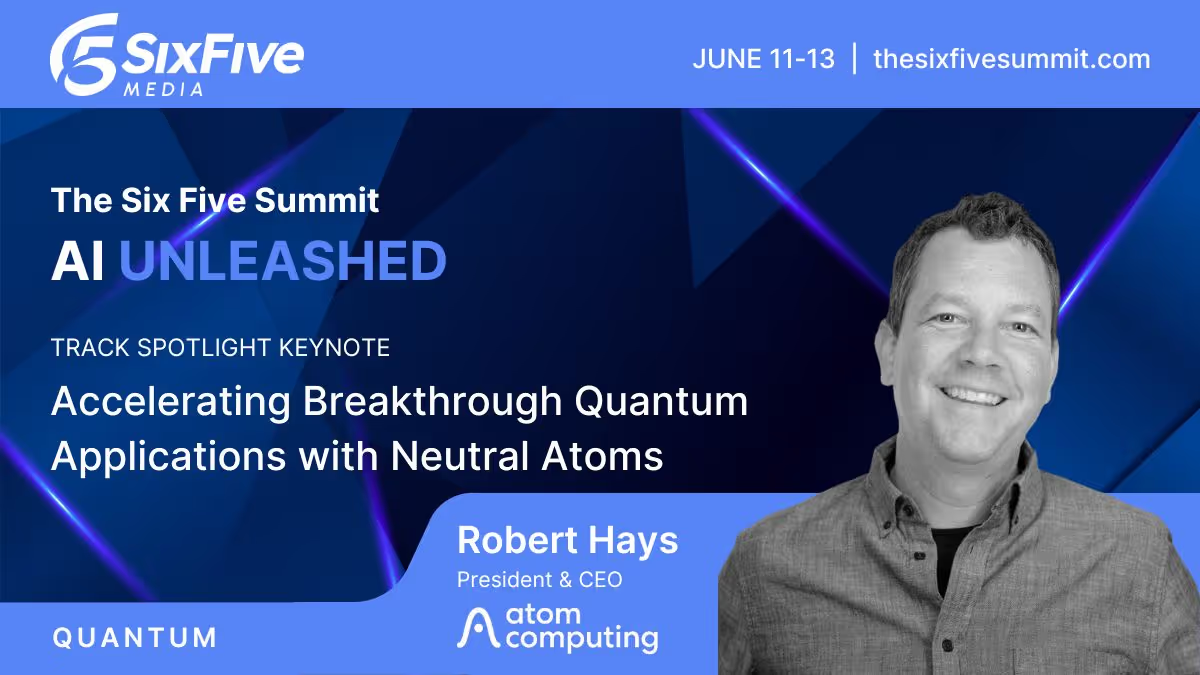
Accelerating Breakthrough Quantum Applications with Neutral Atoms
Our planet needs major breakthroughs for a more sustainable future and quantum computing promises to provide a path to new solutions in a variety of industry segments. This talk will explore what it takes for quantum computers to be able to solve these significant computational challenges, and will show that the timeline to addressing valuable applications may be sooner than previously thought.




